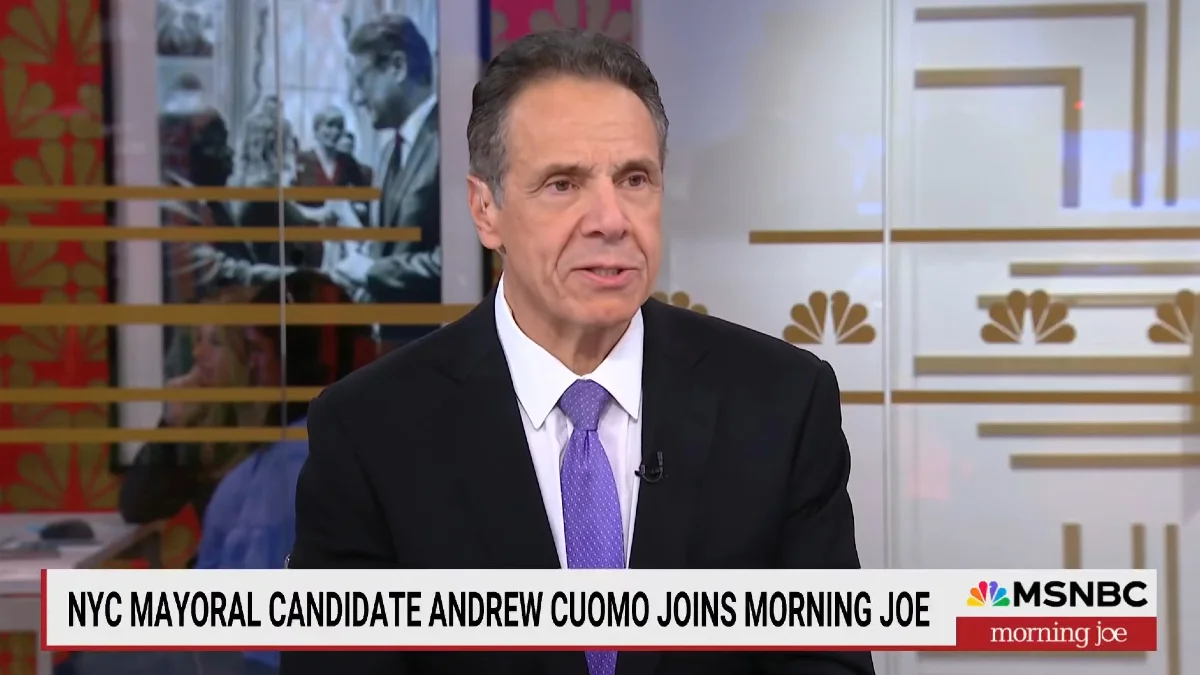Copyright Newsweek

Democrats’ polling lead ahead of the 2026 midterm elections reveals a warning sign for their efforts at reclaiming a majority of seats in the House of Representatives next November. Newsweek reached out to the DCCC for comment via email. Why It Matters Historically, the party in the White House loses seats during the midterms, and Democrats have been optimistic about their chances of flipping key battleground districts across the country next November. But recent polls suggest Democrats are in a weaker place than they were at this point six years ago, when they were preparing for their midterm in the first Trump administration. The polling lead, coupled with several Republican-led states redrawing their congressional boundaries to favor the GOP, could be a warning sign for the Democratic Party, which continues to face low favorability from voters, even as President Donald Donald Trump’s approval has fallen since January. What to Know Democrats won the national popular vote by about 8.4 percentage points and a 235-199 House majority in the 2018 midterms. Polls accurately predicted that victory, giving Democrats a wide advantage over the GOP in the months leading up to the election. The final average from Real Clear Politics prior to Election Day gave Democrats a 7.3 point lead. Polling from early 2017 already gave Democrats an edge, sonneting the party has struggled to replicate this time around. On October 20, 2017, Democrats led Real Clear Politics' polling aggregate by 9.2 percentage points. On Monday, Democrats held only a 1.6 point lead in the generic ballot, raising red flags for the party. Several recent polls showed Democrats with very narrow generic ballot leads. An Emerson College poll released last week showed Democrats with 43.9 percent support, compared to Republicans’ 42.5 percent. An additional 13.6 percent remained undecided. That means Democrats led by fewer than two points in that poll. It surveyed 1,000 registered voters from October 13 to October 14, 2025 and had a margin of error of plus or minus three percentage points. A recent poll from CNBC showed similar results—48 percent of respondents in that survey said they preferred to see Democrats win the midterms, while 47 percent said they would support Republicans. It surveyed 1,000 adults from October 8 to October 12, 2025. Todd Belt, a professor of political science at The George Washington University, told Newsweek that Democrats have not seen better polling because the party “hasn't really defined itself since Trump's victory last year.” “Democrats have been on their heels responding to Trump's actions and they haven't really generated a coherent message about who they are and what they stand for. It's difficult to do when Donald Trump dominates the news cycle with a daily barrage of actions and statements, and given the fact that Democrats have very little power at the federal level,” Belt said. There’s still time for the party to craft a coherent message before the midterms, but they should do so quickly to keep their base motivated, Belt said. Democrats must make the case to voters about why their futures will be better with their party in power. Opposing Trump won’t be enough, he said. “It's true that the president's party usually loses seats during the midterm election, but Democrats can't just depend upon that trend, especially with the gerrymandering schemes. Elections are tradeoffs, and Democrats need to give voters something to vote FOR, not just AGAINST,” Belt said. Redistricting further complicates Democrats’ equations. Texas and Missouri have already drawn out several Democratic districts, while Republican lawmakers other states like Indiana, Kansas and North Carolina have also moved to redraw their lines. Democrats have sought to mitigate losses via their own redistricting effort in California, where voters will vote on a ballot question in November that, if passed, would temporarily replace the current map, drawn by an independent commission, with one more favorable to Democrats. But Democrats would likely need a larger generic ballot lead to overcome maps that are more favorable to Republicans. Betting odds still favor Democrats, though by a decreasing margin. On Monday, Kalshi gave Democrats a 57 percent chance of reclaiming the House majority. The Cook Political Report gives Democrats an advantage in 202 seats, and Republicans an advantage in 215 seats. There are 18 tossups in their rankings. What People Are Saying Professor Todd Belt told Newsweek: “It is often easy to put too much stock in the "generic ballot" question. After all, people vote directly for their representative and not the party. But as most politics have become nationalized, and much of this election will be a referendum on Trump, this question can be instructive.” NRCC spokesperson Mike Marinella told Newsweek: “Democrats can’t hide their far-left lunacy, from their reckless government shutdown to their radical socialist agenda. Voters are sick of paying the price for Democrat chaos, and voters will elect Republicans across the board.” CNN's Harry Enten wrote on X last week: “Democrats' chance of taking the House in 2026 have plummeted, while GOP chances have skyrocketed over the last 6 months...Why? 1. Dems aren't keeping up with the pace they set in 2017 on the generic ballot. 2. GOP may be looking at big gains from mid-decade redistricting.” What Happens Next Polls will continue to be monitored as a key metric of how the American public feels ahead of the 2026 midterms, which are set for November 4, 2026.



